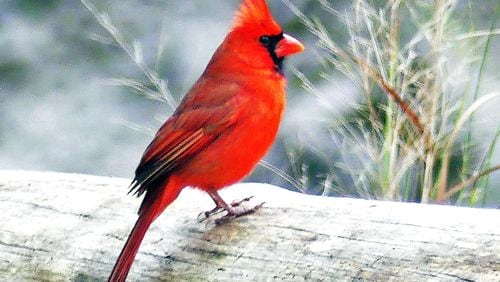Christmas cards are steadily arriving now in our mailbox, happy greetings from family and friends that warm our hearts.
It is said that the tradition of sending Christmas cards began in England in the 1840s and caught on in America in the 1870s. Since then, artists have used a vast array of Yuletide drawings, paintings and other images to decorate cards.
But some of the most popular holiday images are those featuring birds, perhaps because the feathered creatures spark joy and cheer when they appear in our yards on a wintry morning. Over the decades, several bird species have graced Christmas cards — doves (peace symbols), partridges (in a pear tree), nuthatches, blue jays, bluebirds, robins, Carolina wrens, chickadees and others.
By far, however, the most favorite Christmas card species is the Northern cardinal. Each season, we can count on getting at least a few cards featuring a brilliant red male cardinal — sometimes with his mate, who is colorful in her own right. Not only do cardinal images grace greeting cards, but they’re also common on Christmas ornaments, figurines, wrapping paper — and on calendars as the “pinup” for December.
Indeed, the Northern cardinal has come to be called the bird of Christmas. A main reason for its high popularity during the holidays, it has been said, is that red is one of two colors — the other being green — most associated with Christmas. In particular, red seems everywhere at holiday time — Santa’s suit, holly berries, Rudolph’s nose, a red bow atop the tree.
This time of year, just seeing a cardinal boosts my Christmas spirit. But I also know that the cardinal is a year-round Georgia resident that retains its shiny redness through all seasons. Long after the Christmas ornaments are packed away and the tree is taken down, the cardinal will still be around, brightening our days all year long.
IN THE SKY: From David Dundee, Tellus Science Museum astronomer: Winter begins at 10:59 a.m. Tuesday, the moment of the winter solstice. Winter’s first day also is the shortest day of the year. Tuesday night, the annual Ursid meteor shower will peak at about 15 meteors per hour in the eastern sky.
The moon will be full on Sunday — the “Snow Moon,” as the Cherokee people called this month’s full moon. Venus (high), Jupiter and Saturn are in the west at around sunset.
Charles Seabrook can be reached at charles.seabrook@yahoo.com.
About the Author






